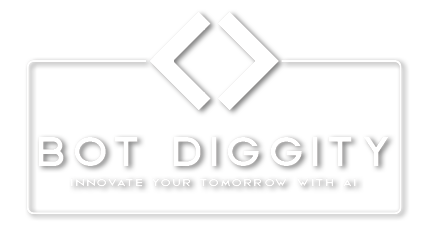The digital age is well underway, bringing with it the integration of artificial intelligence (AI) into classrooms. This shift has triggered a broad discussion far outside academic circles. The introduction of ChatGPT, an advanced AI language model, has pushed us to think about the good and bad sides of using AI in education, mainly for students in K-6.
Technology is now a big part of our daily lives. So, it’s not shocking that AI is in the hands of young students. AI tutoring and writing assistance tools are here to change how kids learn and handle their studies. But, there’s a worry: can AI lead to more cheating than real learning1?
Key Takeaways
- Concerns over the potential misuse of AI in K-6 education, with disagreements among educators and scholars on acceptable use
- Increased unethical use of AI in education, as reported in the Artificial Intelligence Index Report 2023
- Equity issues and privacy concerns arising from the use of AI systems in the classroom
- The need for ongoing critical evaluation of the efficacy of AI systems in education
- Importance of establishing clear guidelines and regulations for the ethical deployment of AI in K-6 education
The AI debate for K-6 education reveals a mixed bag of potential. On one side, AI tools can make learning better, match lessons to students’ needs, and spark creativity. But, there’s also the cheat issue. Some worry that AI might make it easy to skip learning and cheat on school work1.
In the next parts, we’ll look deeper at the AI cheating problem, the ethics involved, and what teachers and students think. Exploring these issues helps us see both the challenges and the chances that AI brings to younger classrooms. This understanding moves us toward using technology in ways that boost, not break down, the learning adventure.
The Rise of AI and Academic Integrity Concerns
AI technology is rapidly advancing, exciting the education world but also causing worry. Educators are now trying to figure out how AI tools like ChatGPT might affect honesty in studies2. Cheating with AI’s help on homework is becoming more common, even among younger students2. Detecting this cheating is hard for teachers, raising concerns. However, heavy penalties for those who get caught show the big challenges our education faces2.
Banning AI: The Digital Divide
Banning AI chatbots in schools might worsen the digital gap3. Using AI well is now a key job skill. Denying some students this knowledge risks putting them behind others3. This is why ensuring all students can learn AI fairly is crucial, no matter their background.
Ethical Considerations and Academic Integrity
Using AI in study brings up big ethical issues. Faking AI’s work as your own is clearly wrong. But how students use AI chatbots for fixing texts or code is tricky4. Teachers are finding it hard to teach kids the right way to use AI, while still valuing their independent thinking and hard work4.
So, schools are making rules for the fair use of AI3. Teaching students to be open, learn well, and credit AI’s work properly is key3. Also, workshops teach both students and teachers the right way to use AI in school3.
As AI becomes more common in schools, keeping a watch on its fair use is key3. Updating policies and focusing on the right ethical path can help. This way, schools can use AI well, letting students benefit while keeping the study environment honest and meaningful4.
AI being used by k-6 students, a good thing or does it encourage dishonesty
AI technology’s advance into K-6 education is a topic of heated discussion. It offers custom support to students, providing resources tailored to each. It can help deepen their learning experience.
However, some worry AI might lead to cheating. Students might rely on AI for quick answers, skipping the process of learning. This could lessen their ability to think critically or research thoroughly5.
AI as a Learning Aid
AI tools, like chatbots, bring many helpful features into the classroom. They offer personalized tutoring, make study tools like flashcards, and help students summarize information. This makes learning more accessible and helps students learn efficiently6.
Detecting and Addressing AI-Assisted Cheating
The benefits of AI are clear, but so are the dangers of cheating. Technologies to detect copied work exist but aren’t perfect6. It’s crucial for teachers to look at the bigger picture when checking for cheating.
The reasons behind cheating should also be tackled. This includes differences in culture or not knowing how to reference sources. Creating a supportive environment is key to reducing cheating7.
Finding a balance with AI in education is vital. It should aid learning without compromising honesty. A mix of tech and teaching methods is necessary. This way, AI can truly support students while maintaining ethical standards5.
“The key is to use AI as a tool to enhance learning, not as a replacement for the learning process itself.”
Teachers’ Perspectives on AI and Academic Dishonesty
As AI gets better, teachers face new issues, like how to keep students honest. In a study, all 67 teachers said AI makes students cheat more8. They also found it hard to tell when AI helps students write8. Yet, by 2023, more research showed how AI can actually help students write8.
Teachers are finding it hard to fight cheating as AI spreads. Since there are more AI tools, students find it easier to cheat8. But figuring out which work is really the student’s, not AI’s, is tough8.
Educators’ Perspectives on AI Utilization
A study with 248 K12 teachers found that most women taught elementary kids, while more men taught high school9. Both groups saw AI differently. Women worried more about right and wrong, but men thought about the effects of using AI9. The study also said how confident and calm a teacher is affects their opinion on AI9.
This study suggests we need to set ethical rules for using AI in schools9.
Navigating the Challenges of AI-Assisted Cheating
Teachers are worried AI will make cheating worse10. A ChatGPT program made some teachers’ jobs harder but helped others10. More than half of K-12 teachers tried ChatGPT soon after it came out, using it often10. And some teachers already caught students cheating with it10.
To fight this, big school areas in Baltimore and other cities banned ChatGPT10. OpenAI, who made ChatGPT, also introduced a tool to tell if AI was used in a piece of writing10.
“The proliferation of AI-powered tools has considerably widened opportunities for students to engage in academic dishonesty, and teachers face challenges in discerning authentic work from content generated with the assistance of AI tools.”
| Educator Category | Percentage |
|---|---|
| Elementary School | 43% |
| Middle School | 16% |
| High School | 40% |
Students’ Perceptions of “AI-giarism”
AI tools are becoming more common in schools. Researchers are studying what students think about plagiarism with these tools. They find that awareness and understanding of plagiarism vary among students around the world11.
Students generally don’t like using AI text as their own. But they are okay with using AI to fix their writing or find sources. This confusion shows that we need to know what students think about “AI-giarism.” This understanding is key to keeping academic honesty in an AI world11.
Researchers use different tests to figure out what students believe about copying. They developed tests like the one from Mavrinac et al. in 2010. Another test, revised by Howard, Ehrich, and Walton in 2014, measures how students think about copying11. The Oghabi, Pourdana, and Ghaemi (2020) Questionnaire looks at cultural views on copying11. Cheung, Stupple, and Elander also made a test to see what students know about being honest when writing11.
Surprisingly, students from places like Australia know a lot about plagiarism11. This finding shows that it’s important to understand students’ opinions around the world.
With more AI tools in use, knowing what students think about AI and plagiarism is very important. This is valuable for teachers and leaders who want to keep education honest in the digital world11.
Conclusion
AI in education is making people worry about academic honesty. With AI tools getting better, teachers face a tough job. They need to blend the good side of AI with keeping student work honest12. This means setting clear rules, using smart ways to check work, and teaching students to think critically.
Solving the problem of AI-helped cheating is key to keeping our education real. It’s also vital for making sure students are ready for the AI future1314. Even if some students try to cheat with generative AI tools, using strong AI detection and teaching about ethics can cut down on cheating and keep tests fair1314.
Handling the AI and honesty challenge lets schools and teachers make a real learning place. It helps students learn to think and act in the right way. This is how they get ready for a world shaped by AI12.
FAQ
What is the impact of AI chatbots like ChatGPT on academic integrity?
How can the use of AI chatbots in education lead to a digital divide?
What are the ethical considerations around using AI chatbots in academic work?
How can AI be used as a learning aid for K-6 students?
How can teachers effectively detect and address AI-assisted cheating in K-6 students’ work?
What is the role of teachers in addressing academic dishonesty in the era of AI?
How do students perceive the use of AI-powered tools in academic work?
Source Links
- https://www.inspera.com/ai/examples-of-ai-misuse-in-education/ – 7 Examples of AI Misuse in Education – Inspera
- https://www.linkedin.com/pulse/guardians-academic-integrity-how-ai-revolutionizing-fight-joey-huerta – Guardians of Academic Integrity: How AI is Revolutionizing the Fight Against Student Cheating
- https://www.carnegielearning.com/blog/academic-integrity-ai-in-education/ – 5 Tips For Addressing AI in Your Academic Integrity Code
- https://guides.lib.jmu.edu/AI-in-education/integrity – Research Guides: Artificial Intelligence (AI) in Education: Academic integrity, syllabi statements, & AI
- https://www.eschoolnews.com/digital-learning/2024/02/19/misconceptions-ai-students/ – The 3 biggest misconceptions about AI
- https://www.pennfoster.edu/blog/is-using-ai-to-write-an-essay-cheating – Is Using AI for School Cheating?
- https://ctl.columbia.edu/resources-and-technology/resources/academic-integrity/ – Promoting Academic Integrity
- https://journals.sfu.ca/jalt/index.php/jalt/article/download/921/615 – PDF
- https://phys.org/news/2024-02-teachers-ethical-judgments-ai-classroom.html – How teachers make ethical judgments when using AI in the classroom
- https://www.nea.org/nea-today/all-news-articles/chatgpt-enters-classroom-teachers-weigh-pros-and-cons – As ChatGPT Enters the Classroom, Teachers Weigh Pros and Cons | NEA
- https://arxiv.org/pdf/2306.03358 – PDF
- https://philarchive.org/archive/ORAAII – PDF
- https://er.educause.edu/articles/sponsored/2023/11/academic-integrity-in-the-age-of-ai – Academic Integrity in the Age of AI
- https://www.linkedin.com/pulse/double-edged-sword-ai-chatgpt-academic-dishonesty-role-shanna-diaz-msdoc – The Double-Edged Sword of AI: ChatGPT, Academic Dishonesty, and the Role of ExamRoom.AI



Dimensional mastery personified! For more mastery, try Sprunki Pyraminx.